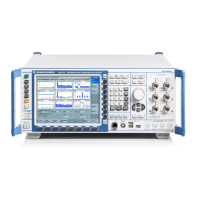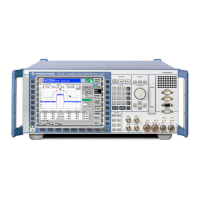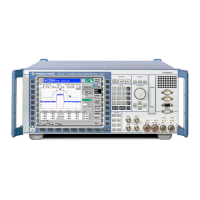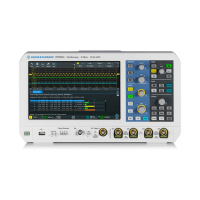Annexes
R&S
®
CMW500
293User Manual 1173.9463.02 ─ 06
7.1.1.9 TRIG A, TRIG B
BNC connectors for trigger input or output signals; see Trigger.
Input signal: An external trigger input signal must be an LVTTL/LVCMOS (3.3 V) signal
with a rise/fall time below 5 ns. The trigger input is high impedance.
Output signal: The CMW trigger output has an LVTTL/LVCMOS (3.3 V) signal. The
output impedance is approximately 50 Ohm. Evaluate the rising edge of the generated
positive pulses.
Trigger cables
Be aware that long trigger cables may cause signal reflections!
7.1.1.10 DVI
DVI-D Dual-link connector for external monitor connection; see Connecting a Monitor.
For instruments with display optional (R&S CMW-B620A).
7.1.2 LAN Interface
To be integrated in a LAN, the instrument is equipped with a LAN interface, consisting of
a RJ-45 connector, a network interface card and protocols. The network interface card
supports IEEE 802.3 for a 10 Mbps Ethernet and IEEE 802.3u for a 100 Mbps Ethernet.
Instrument access is possible via the HiSLIP protocol (recommended), the VXI-11 pro-
tocol or via direct socket communication. Of these three possibilities, HiSLIP is the rec-
ommended one. The following table provides a comparison of important features.
Socket VXI-11 HiSLIP
GPIB Emulation
‒ ✓ ✓
Instrument Locking
‒ ✓ ✓
Support of Message
Exchange Protocol
‒ ✓ ✓
IPv6 Support
✓ ‒ ✓
High Performance
✓ ‒ ✓
The remote control instructions (SCPI commands) are delivered by a test application,
usually using VISA as an intermediate abstraction layer. VISA encapsulates the low level
function calls and thus makes the transport interface transparent for the user. The nec-
essary VISA library is available as a separate product. For details contact your local R&S
sales representative.
Interfaces and Connectors
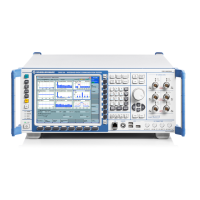
